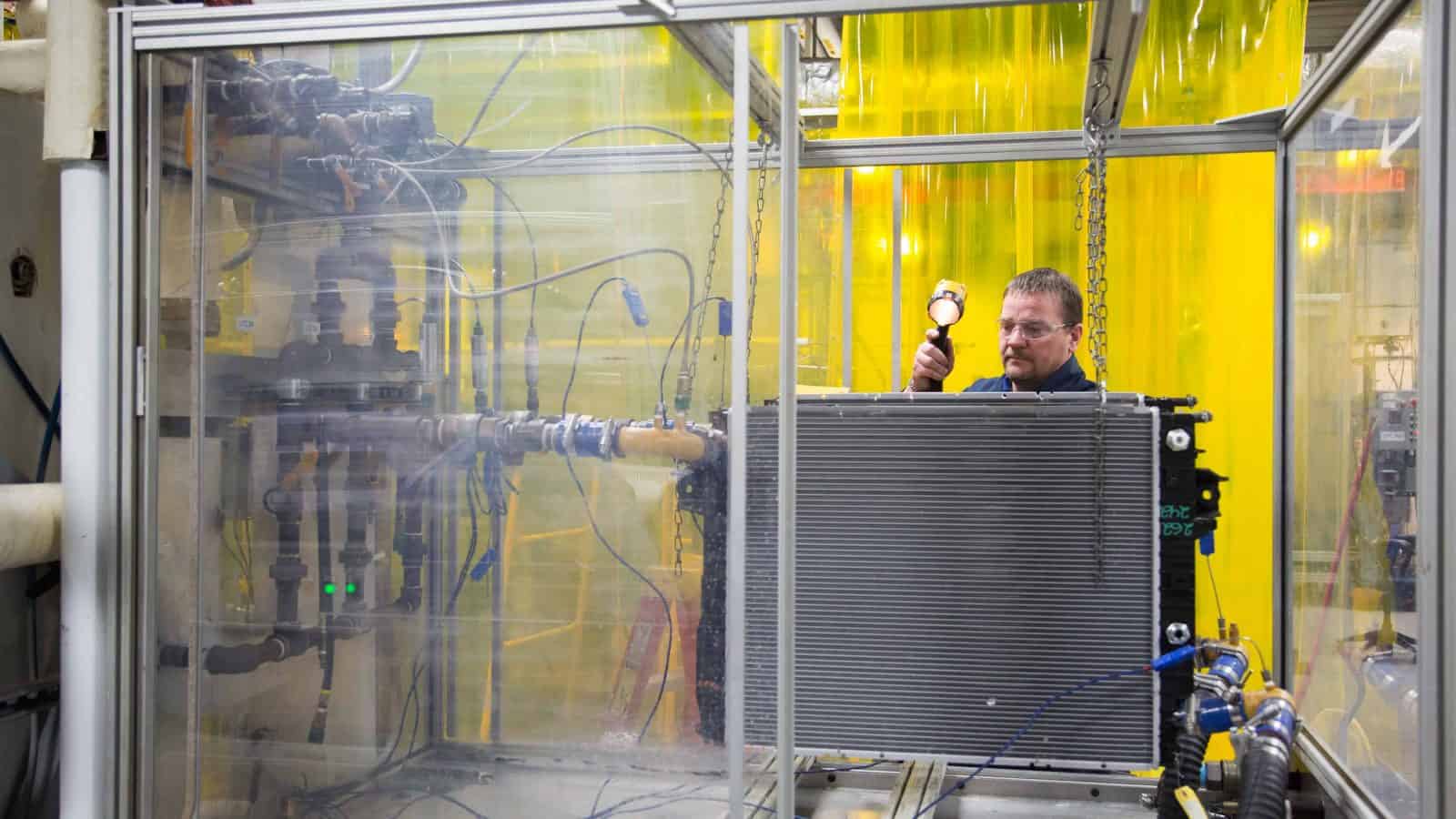NAM Election Playbook: Synergies, Not Sides

The NAM isn’t playing favorites in an election year. Instead, it’s redoubling its post-partisan approach to advocacy. NAM President and CEO Jay Timmons’ message to manufacturers: the association will leverage its hard-won, bipartisan influence to advance manufacturers’ priorities, no matter who’s in charge.
- “That’s what we’re about. Policy that helps people. Policy—not politics, personality or process. That’s what will guide us in 2024 and beyond,” Timmons said in a speech that helped kick off the NAM board meeting this week, before more than 200 of manufacturing’s leading executives in Phoenix, Arizona.
Why it’s important: “Both sides want us on their side,” Timmons emphasized while recounting a recent legislative debate. That trust and respect, he said, translates into wins: agencies modifying rules to avoid lawsuits and high-level White House officials acknowledging the impact of NAM campaigns.
Battles loom: But the very system enabling these victories is under threat, Timmons warned, placing the onus on manufacturers to not just build products, but to empower the NAM to utilize their voices and stories to advance policies that strengthen the economy and underpin democracy and free enterprise.
- Tax showdown: Any new taxes on manufacturers are a nonstarter, Timmons vowed, staking a claim in the looming 2025 tax fight and reiterating manufacturers’ call for immediate passage in the Senate of full capital expensing, R&D expensing and interest deductibility.
- Regulatory onslaught: From new Environmental Protection Agency air standards to the broader regulatory agenda, Timmons argued that overzealous rules impede manufacturing competitiveness. He specifically criticized the new PM2.5 standards, saying the EPA “set them at a level that is lower than the EU or the UK, and imposed a compliance timeline that is far more aggressive.”
- LNG halt: Timmons blasted the Biden administration’s liquefied natural gas export permit freeze, calling it shortsighted and detrimental to both manufacturers and broader U.S. energy and climate goals. “They want to address climate change?” he asked. “So they’re going to have other countries buying and burning dirtier energy? They want to support our allies around the world? So they’re going to force Europe and Japan and others to get their fuel from the likes of Russia?”
- Immigration deadlock: He criticized inaction on both sides of the aisle, saying border security and workforce solutions can—and must—coexist.
Opportunity ahead: Despite considerable challenges, Timmons sees an opportunity for manufacturers to take the lead in promoting American values and sound policies that fuel the industry’s strength.
- “This election year, manufacturers can help renew a shared sense of purpose,” Timmons told executives. “Remind Americans why our country—our system rooted in God-given human rights and fundamental freedom—is worth celebrating and defending.” At stake is not just the next regulatory win, but the very system that made U.S. manufacturing a global powerhouse, he said.
- America’s bicentennial celebration helped us see beyond the divisions of the day, Timmons observed. As we approach the 250th anniversary of the signing of the Declaration of Independence, “it’s manufacturers who are positioned to cultivate that patriotic spirit,” Timmons said. It’s more than just bottom lines. “We can help mend the divides—so that we can promote policy that will strengthen manufacturing in America.”
State of Manufacturing: Strong, But Not Guaranteed
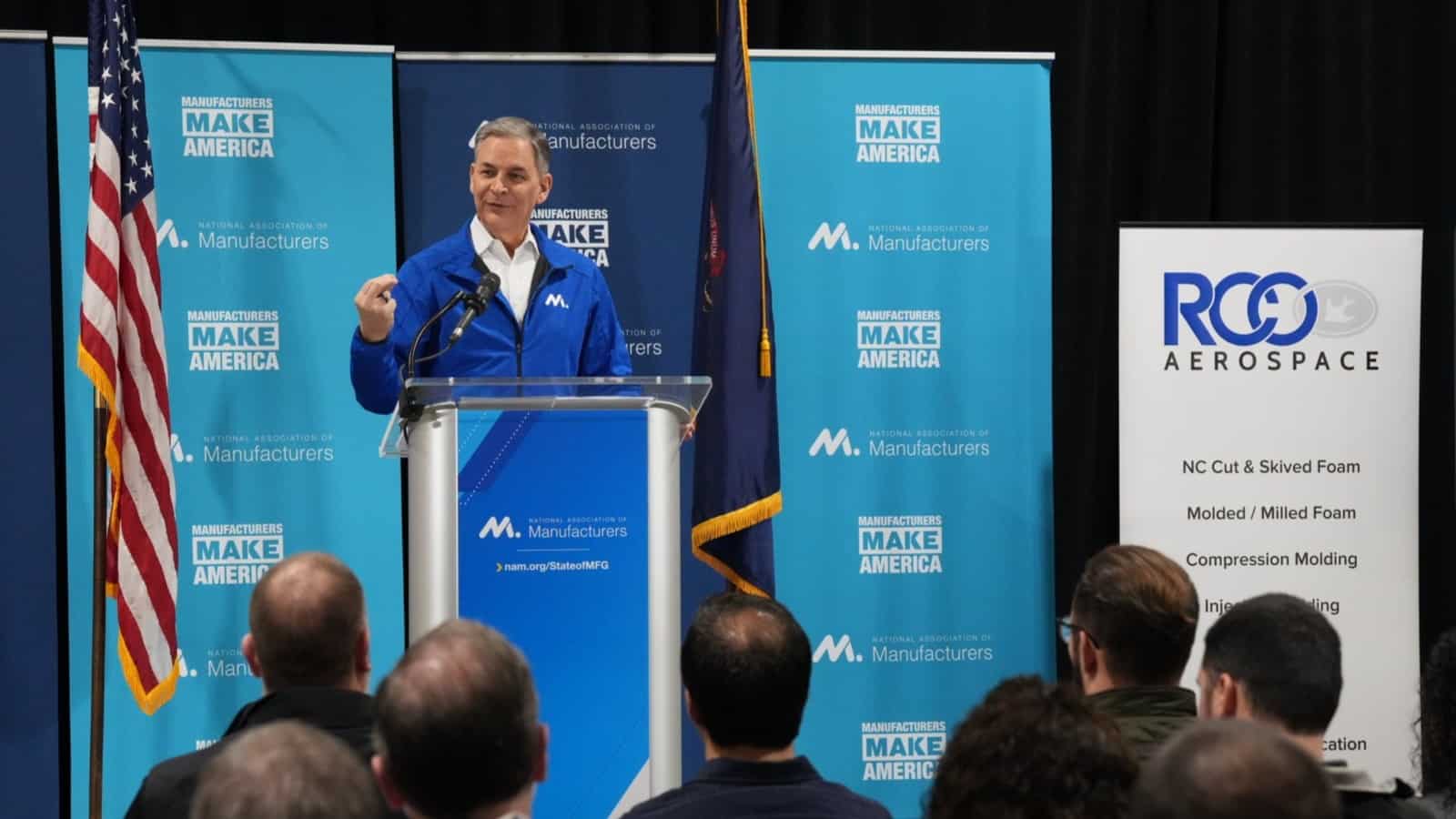
What’s the state of manufacturing in the U.S.? Strong and resilient—but under threat.
That was the message delivered by NAM President and CEO Jay Timmons and other speakers at the NAM’s 2024 State of Manufacturing Address at RCO Engineering in Roseville, Michigan, on Thursday.
- Attending the address were nearly 100 RCO Engineering team members—some of whom are second- or even third-generation manufacturing workers—as well as local education leaders, including Macomb Community College President James O. Sawyer IV and Macomb Intermediate School District Superintendent Michael R. DeVault.
- The address was the keystone event of this week’s launch of the 2024 Competing to Win Tour, an opportunity to visit local manufacturers and report on where the industry stands at the start of 2024.
A place of strength: “The state of the manufacturing industry depends on the people in it,” Timmons said in remarks covered by POLITICO Influence (subscription). “And we are now 13 million strong—the largest in more than 15 years. If we can continue on this trajectory, this resurgence, imagine what the state of manufacturing might look like in 2030.”
- Johnson & Johnson Executive Vice President and Chief Technical Operations & Risk Officer and NAM Board Chair Kathy Wengel echoed that sentiment in her opening remarks. “Manufacturers are improving the quality of life for everyone. … Together, we can lead the way.”
- And Michigan Manufacturers Association President and CEO John Walsh told the audience at RCO Engineering, “You are making parts here that are going everywhere. It’s a phenomenal story for us in Michigan. It not only helps you as employees here, but it helps your families, it helps your communities. It builds our state. It builds our nation.”
- “Manufacturing … is an industry that is vital to our economic competitiveness,” said Macomb County Executive Mark Hackel. “In Macomb County, we’re not just witnessing the growth of manufacturing; we’re actively contributing to it. What we are doing here is creating an environment where innovation thrives and where manufacturers can grow as well as compete.”
- RCO Engineering General Manager Jeff Simek agreed. “The manufacturing brand is coming back, and it’s coming back alive—and you guys are a big, huge piece of that,” he said to loud applause.
Fork in the road: But continued manufacturing strength isn’t guaranteed, Timmons said. Rather, it’s in large part contingent on sound policy decisions by U.S. leaders.
- “We will head in the wrong direction if Congress lets taxes go up on small businesses when rates expire next year,” Timmons said. “Or if they hit you with even more regulations—regulations even harsher than ones they have in Europe. Or if they fail to solve the immigration crisis because they put politics over good policy. Or choose trade barriers rather than trade agreements, or … abandon our allies overseas and put our national security at risk.”
- The recent regulatory onslaught by federal agencies—which Timmons discussed with Fox Business earlier this week—must stop and be replaced with sensible rulemaking done in cooperation with manufacturers, he said.
- He cited the Environmental Protection Agency’s recently finalized, overly stringent standard for particulate matter and the Biden administration’s decision to freeze liquefied natural gas export permits. This “forc[es] our allies, like Europe and Japan, to buy dirtier energy from countries we can’t trust, potentially enriching the likes of Russia … undercut[ting] our most basic national security objectives,” Timmons said.
No new taxes: The NAM’s message to Congress on taxes is simple: “No new taxes on manufacturers in America,” Timmons said.
- “And while we’re at it, Congress should bring back some of the tax policies that made it easier for manufacturers to invest in the future.”
On immigration: The U.S. needs a common-sense solution to immigration, and it needs it now, Timmons said.
- While manufacturers may not like every piece of the bipartisan border deal that was recently killed in the Senate, “here was my test: Does it make us more secure than we are today? Yes. Does it make our workforce stronger than it is today? Yes. And does it help our allies overseas? Yes,” said Timmons.
Come what may: No matter what the November elections bring, manufacturers will continue to do the jobs so many people depend on them to do, Timmons concluded.
- “Our commitment is to work with anyone, and I truly mean anyone, who will put policy—policy that supports people—ahead of politics, personality or process. We will stand with you if you stand with us in advancing the values that have made America exceptional and keep manufacturing strong.”
U.S. “Very Concerned” About Critical Minerals
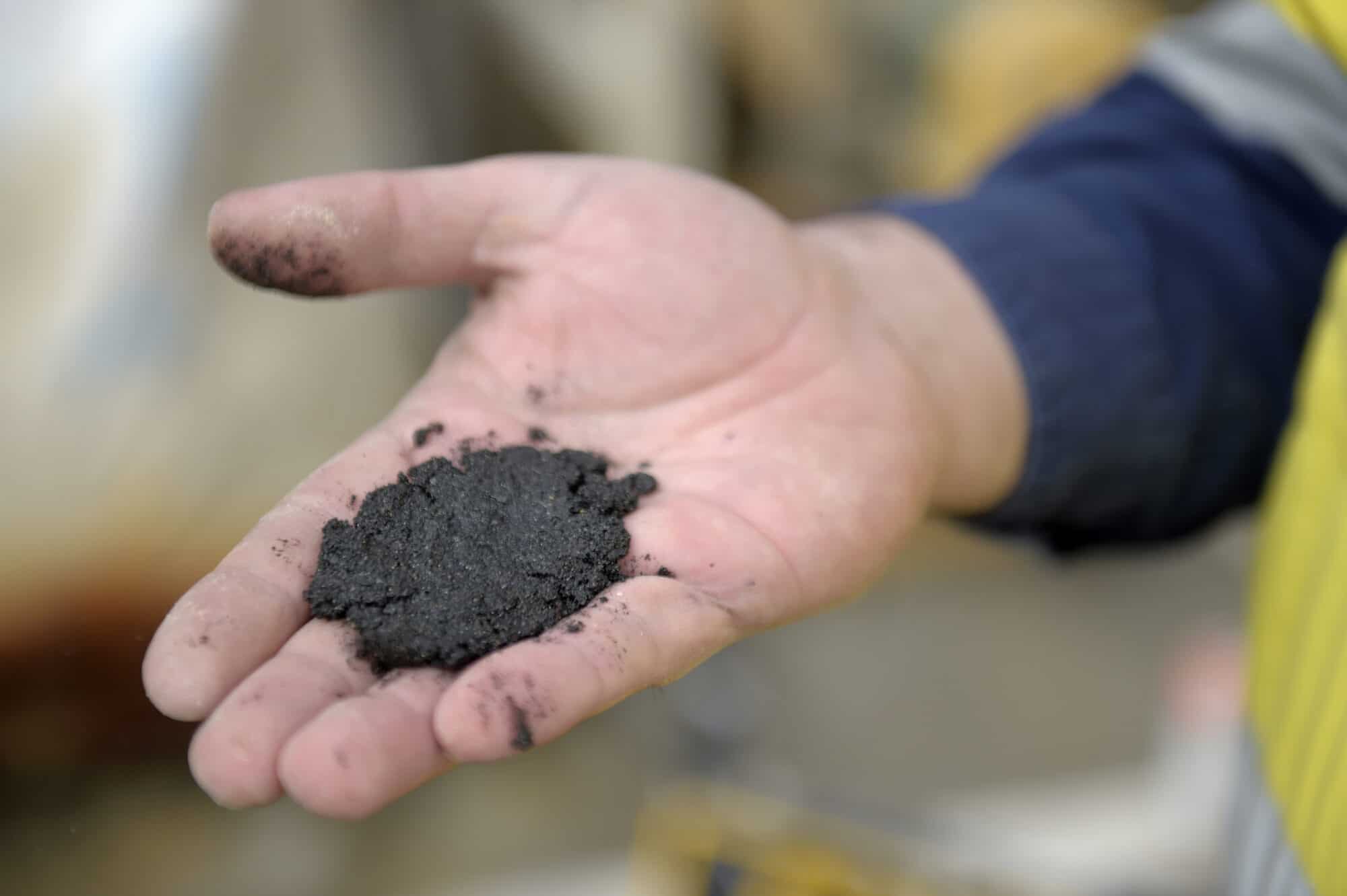
The Biden administration is “very concerned” about U.S. reliance on China for critical minerals, U.S. Energy Secretary Jennifer Granholm said Wednesday, according to CNBC.
What’s going on: China’s dominance in the world’s critical minerals supply chain is “one of the pieces of the supply chain that we’re very concerned about in the United States,” Granholm told the news outlet on the sidelines of the International Energy Agency’s 2024 Ministerial Meeting in Paris.
- China produces approximately 60% of all rare earth elements, which are critical to alternative-energy technologies, such as electric vehicles.
Why it’s important: “As part of a rapid uptick in demand for critical minerals, the IEA has warned that today’s supply falls short of what is needed to transform the energy sector,” according to the article.
What the administration is doing: Both production and processing of critical minerals “have to be addressed,” Granholm said.
- “And that’s why we are working very closely to ensure that we have identified which raw materials [or] critical minerals we need to be able to do our transition to a clean energy economy.”
The NAM says: “Other countries are taking all possible measures to develop domestic sources of critical minerals, and it should be a wake-up call to the U.S. that we need to be doing the same,” said NAM Vice President of Domestic Policy Brandon Farris. “We also need to reform our broken permitting system to get these projects operational as soon as possible.”
Rinnai Fights for Efficient Water Heaters
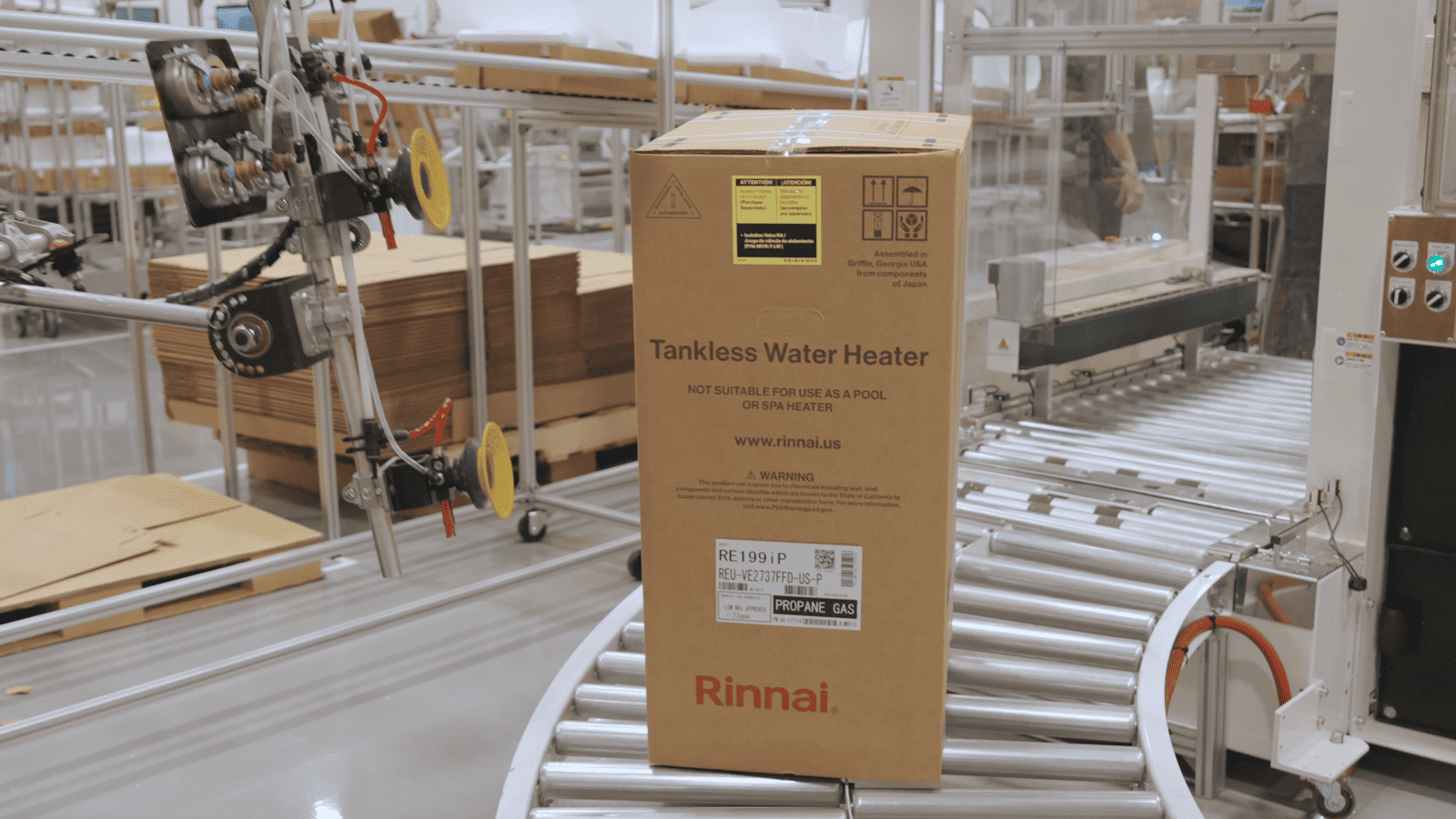
For nearly 50 years, Rinnai America Corporation has been selling innovative products in the United States. But as the Department of Energy prepares to unveil new rules in April, the water heater manufacturer is bracing for a big—and unnecessary—setback to its operations.
The background: There are a lot of water heater options on the market, and consumers must make a few key choices.
- First, they can choose between electric and gas heaters.
- Second, if they choose a gas heater, they can select one with a tank or one without.
- Finally, even tankless gas heaters come in two forms: condensing or noncondensing. Condensing heaters are used generally in colder environments, while noncondensing units are better for warmer climates.
The rule: The Department of Energy has proposed regulations on gas water heaters that would go into effect in 2029.
- However, the proposed efficiency requirements for tankless gas water heaters are so strict that noncondensing tankless units would not qualify—removing a cost-effective option from the market, and one that is in fact comparatively efficient.
- “The DOE is not taking into consideration what is best for the consumer, best for the industry and best for the environment overall,” said Frank Windsor, president of Rinnai America Corporation. “This is a shortsighted decision that doesn’t take into account the ramifications.”
The consumer impact: The DOE’s rule would restrict consumer choice severely by creating a de facto ban on noncondensing tankless heaters.
- “Consumers are getting hurt,” said Windsor. “Around 20% of consumers want tankless options”—including noncondensing tankless heaters.
The industry effect: Rinnai invested $70 million in 2022 in a new Georgia facility that makes noncondensing tankless gas heaters.
- “We built this new facility to make tankless water heaters that give consumers significant energy efficiency at a low price—and now the DOE is saying that, by 2029, you can’t make noncondensing units anymore,” said Windsor.
- “We’ve got close to 200 people working for us in Griffin, Georgia, so it impacts a lot of people.”
The innovation loss: According to Windsor, the rule is also counterproductive because it forces companies like Rinnai to reallocate funds that otherwise could go toward product innovation.
- “We’re going to have to spend money to retool that plant, and then we’ll get taxed on the capital for the plant that we can’t use anymore—and that’s all money that we would’ve spent on product innovation,” said Windsor.
The last word: “Why would you eliminate the availability of a cost-effective, efficient product and force the consumer to buy a more expensive option?” asked Windsor.
Learn more about the high costs of regulations, and the extreme burden on small manufacturers, in this recent NAM study. And check out Manufacturers for Sensible Regulations, a coalition created by the NAM and members of the NAM’s Council of Manufacturing Associations and Conference of State Manufacturers Associations, which is intended to address the regulatory onslaught coming from federal agencies in recent years.
NAM to Senate: LNG Pause Harms Allies, Security
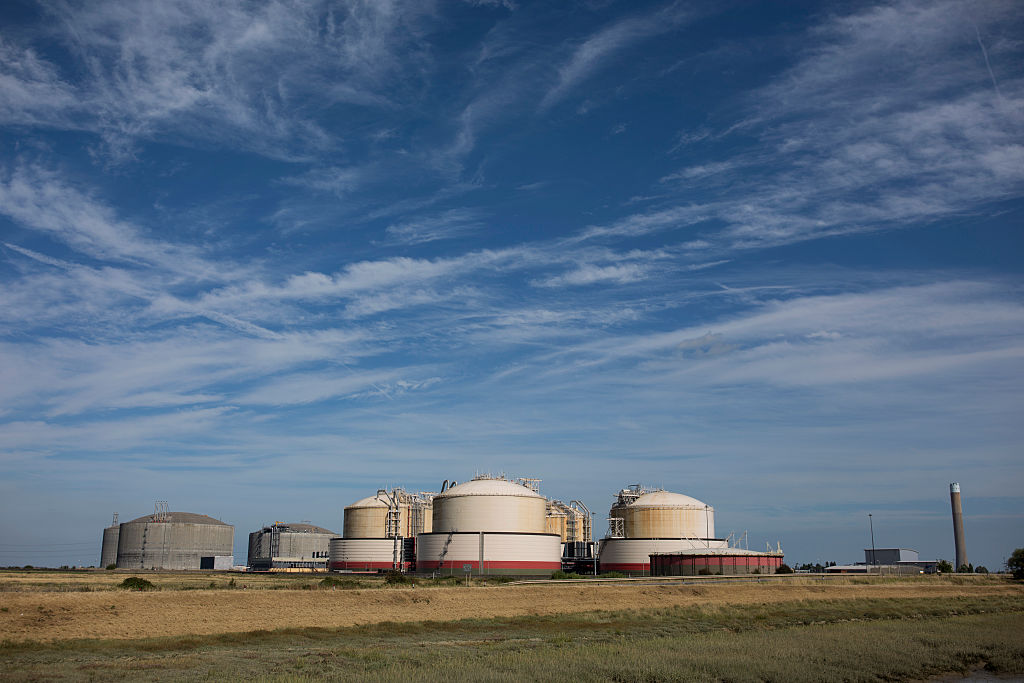
A senior Department of Energy official told the Senate at a Thursday hearing that the Biden administration’s recent decision to pause liquefied natural gas export permits will neither affect supplies to U.S. allies nor jeopardize international energy security, Reuters reports.
- Yet, data supplied by the NAM to the Senate Committee on Energy and Natural Resources ahead of the hearing shows otherwise.
What’s going on: “‘It will not affect our ability to supply our allies,’ [U.S. Deputy Energy Secretary David] Turk said, adding that it does not affect already approved exports.”
- “A U.S. official earlier on Thursday told Reuters ‘I don’t think we’re concerned at all about our ability to meet (European) demand.’”
- The Senate hearing on the LNG permit export pause follows a House hearing on the same topic earlier in the week.
However … Since the 2022 start of Russia’s war against Ukraine, Europe has come to rely increasingly on the U.S.—the world’s top LNG exporter—for natural gas, the NAM told lawmakers.
- “Europe is currently the primary destination for U.S. LNG, accounting for 67% of total exports in the first six months of 2023,” NAM Managing Vice President of Policy Chris Netram said. “For comparison, 64% of the United States’ global LNG exports in 2022, and 23% of American exports in 2021, went to the European Union. … [T]he war in Europe [even] forced diversions of LNG cargo that was bound for Asia.”
“Wrong direction”: Sen. Joe Manchin (D-WV), who called the hearing, said freezing liquefied natural gas export permits is “the wrong direction for our country,” whose LNG exports are helping allies in need.
- “Shockingly, in the White House statements [regarding the permit freeze], there is no reference at all to the crisis created by Putin’s invasion of Ukraine, to the growing instability in the oil-and-gas-producing regions in the Middle East following Hamas’ attack on Israel or to any other crisis that U.S. LNG exports can help address.”
Environmental concerns: Though “Turk said the review will also consider pollution impacts on people living near LNG facilities … [and] ‘take into account all of the health environmental impacts,’” CNBC reports, the permit freeze could “benefit producers of energy sources with significantly higher emissions than [U.S.] LNG,” Netram continued.
- “According to the DOE, Russian exports to Europe had 40% more global warming potential than U.S. LNG across 20 years. Russian gas also had 20% more global warming potential than European coal. Clearly, U.S. LNG exports are better for the environment and help the U.S. and our allies achieve our climate goals.”
What’s next: The moratorium “could face court challenges,” according to CNBC. “A group of 23 Republican state attorneys general in a letter sent to the administration on Tuesday [said] that the Biden administration’s pause is illegal, arguing that the natural gas law requires the DOE to approve LNG exports unless it shows that doing so would not be in the public interest.”
How a Manufacturer Is Solving the Magnet Shortage

They say all you need is love, but in fact, you need a lot of magnets, too. Computers, appliances, electric generators and cars are powered by permanent magnet motors. Yet, most of the permanent magnets that make our modern life possible rely on rare earth materials, which are expensive, unsustainable and typically mined and processed in China.
To fix this bottleneck, Minneapolis-based Niron Magnetics is producing a new kind of magnet that uses two abundant raw materials: iron and nitrogen. By taking rare earths out of the equation, Niron’s Clean Earth Magnets® provide superior cost and supply chain stability to the countless manufacturers that depend on reliable access to high-powered magnets.
Why it matters: According to Niron, the demand for rare earths for critical magnets is outstripping the supply, and the problem is only getting worse.
- “When you look at the amount of magnets that are needed over the next 10 years, it’s triple the amount that are available today,” said Niron Magnetics CEO Jonathan Rowntree.
- “There’s only enough rare earth materials to double the amount of rare earth magnets manufactured every year. So there’s going to be this big imbalance later this decade. We’re well positioned to [meet] the shortfall of permanent magnets using iron nitride technology.”
The value proposition: Niron’s technology has several exciting upsides, according to company leaders.
- First, it relies on materials that are far more abundant and accessible than rare earths.
- Second, the supply chains for components like nitrogen and iron salts are very stable—and not centered in China.
- Finally, the production of a kilo of rare earth magnets generates 2,000 kilos of waste, according to Niron. By contrast, the production of Niron’s rare earth–free magnets is much more environmentally friendly.
- “Depending on which part you look at, whether it’s water or waste or greenhouse gas emissions, our production process is between 70% and 90% more efficient than the current rare earth processes today,” said Rowntree. “We’re excited about solving the environmental burden from the energy transition.”
Next steps: Niron is planning its first large-scale production facility in the United States, a 10,000-ton facility that it hopes will be operational by 2027.
- While its leaders are still considering different locations for the plant, they anticipate that the facility will ultimately result in 680 to 700 full-time jobs, not including the construction and infrastructure roles needed to build it.
- “We’re growing very quickly here in terms of our capability,” said Rowntree. “We’ve doubled the number of employees this year, and we will likely double that number again over the next several years.”
The bottom line: “There’s a growing awareness of critical materials and the rare earth supply challenges, and the risks posed by U.S. reliance on China to supply those magnets. But there isn’t a lot of awareness around the fact that there is an alternative solution,” said Rowntree. “There is alternative technology that we’re aggressively scaling and that will be commercially available by the end of this year.”
Timmons: Biden Administration’s Agencies Are Undercutting the President’s Own Stated Goals Again with LNG Decision
Washington, D.C. – Following the Department of Energy’s announced freeze on export permits for new liquified natural gas projects, National Association of Manufacturers President and CEO Jay Timmons released the following statement:
“Once again the Biden administration’s agencies are undercutting President Biden’s own stated goals. The president has said the following:
- ‘Where is it written that America can’t lead the world in manufacturing again? … Now, thanks to all we’ve done, we’re exporting American products and creating American jobs.’[1]
- ‘This nation used to lead the world in manufacturing, and we’re going to do it again.’[2]
- ‘We just have to remember who we are. We’re the United States of America…There’s not a single thing we can’t do when we put our minds to it. And we can strengthen our energy security now, and we can build a clean energy economy for the future at the same time. This is totally within our capacity.’’[3]
- ‘[W]e’re working closely with Europe and our partners to develop a long-term strategy to reduce their dependence on Russian energy.’[4]
- ‘[W]e’re a great nation. We’re the greatest nation on the face of the earth. We really are. That’s the America I see in our future.”[5]
“Manufacturers call on the president to direct his agencies to support his agenda and to end their political war on the manufacturers who power American jobs, our economy and our national security. Today’s decision weakens our country, while giving Russia an upper hand as Europe and Asia look to transition their energy needs.”
[1] State of the Union Address, Feb. 7, 2023.
[2] Remarks at a Political Rally Hosted by Union Members, June 17, 2023.
[3] Remarks on Actions to Strengthen Energy Security and Lower Costs, Oct. 19, 2022.
[4] Remarks Announcing U.S. Ban on Imports of Russian Oil, Liquefied Natural Gas and Coal, March 8, 2022.
[5] Remarks at First Campaign Speech of the 2024 Election, Jan. 5, 2024.
-NAM-
The National Association of Manufacturers is the largest manufacturing association in the United States, representing small and large manufacturers in every industrial sector and in all 50 states. Manufacturing employs nearly 13 million men and women, contributes $2.85 trillion to the U.S. economy annually and accounts for 53% of private-sector research and development. The NAM is the powerful voice of the manufacturing community and the leading advocate for a policy agenda that helps manufacturers compete in the global economy and create jobs across the United States. For more information about the NAM or to follow us on Twitter and Facebook, please visit www.nam.org.
From Moonshot to Reality: Syzygy Plasmonics’ Emissions-Free Reactor

Syzygy Plasmonics is out to disrupt the $1 trillion chemical-manufacturing value chain.
The Houston-based startup, which bills itself as a “deep decarbonization company,” builds fully electric chemical reactors that are powered by light rather than traditional combustion.
That difference, CEO Trevor Best told us, is what will lead to disruption.
The big picture: “Chemical manufacturing is a foundation of modern human society,” Best pointed out. “With petroleum, natural gas and air, [companies] are able to create a wide variety of critical products,” from fuels and fertilizers to textiles and pharmaceuticals.
- “But today, it’s difficult to abate carbon emissions in chemical manufacturing,” he added. “That’s the problem Syzygy is working to solve.”
The backstory: In 2016, Best and Syzygy co-founder Dr. Suman Khatiwada “were looking for something disruptive” to invest in, Best said. “We reviewed lots of publications from major universities, and one day we happened to read about something happening at Rice University. This [idea] just would not die. We could not find a reason why it wouldn’t work, but no one else saw it.”
- After three decades of research, Rice researchers Naomi Halas and Peter Nordlander had developed a new kind of photocatalyst—a material that uses light to speed a chemical reaction—capable of “substantially lower[ing] the temperatures required for industrial-scale hydrogen production,” according to the university.
- “We quickly realized no one had ever made an industrial chemical reactor that could do that,” Best continued. He and Khatiwada contacted the researchers and eventually purchased the rights to the technology.
- Soon after, Syzygy was born.
Breaking records: In 2018, Syzygy successfully duplicated the Rice researchers’ experiment with a microreactor—but the result wasn’t as efficient at creating hydrogen as Best and Khatiwada wanted.
- They continued to scale up their testing, and by 2022, thanks to an advanced, large-cell reactor, the technology could produce hydrogen at 75% efficiency, surpassing the efficiency of traditional industrial chemical reactors.
- “We’re now on par with best-in-class electrolyzers” in terms of hydrogen production, Best said.
Affordable and emissions-free: One of the best things about Syzygy’s reactor? It produces no emissions, a characteristic the company believes will help it reach its goal of removing one gigaton of carbon dioxide emissions from the atmosphere by 2040.
- Another selling point is that the reactor is made with low-cost, readily available materials. Earlier this year, Syzygy unveiled a six-foot-tall reactor—made of “low-cost steel and glass,” according to Best—at its industrial demonstration plant just outside Houston, where it runs every day.
- Capable of multiple types of chemical reactions, the reactor has drawn interest from multiple companies wanting to deploy the technology in their own operations. Syzygy already has signed several contracts.
Up next: The company plans to bring three separate reactions to market at once in the near future.
- In addition to being emissions-free, the three reactions cost less than their traditional-combustion-powered counterparts, by between 20% and 45%, according to Syzygy.
The last word: Syzygy doesn’t envision many limits in its future, said Best.
- “We see this thing going global,” Best said. “We’re talking to customers all over the world. … [In the beginning,] I thought I was crazy. This was a moonshot. But it has exceeded all our expectations.”
NAM Pushes for Sensible Clean Hydrogen Regulations

Manufacturers are working constantly to develop energy approaches that reduce emissions and promote sustainability—and hydrogen energy is an important part of that mix. But upcoming decisions from the U.S. Treasury Department may make it more difficult for manufacturers to achieve their goals.
That’s why the NAM has been advocating for guidance that implements a hydrogen tax credit in a manner that supports manufacturers’ investments in this technology.
The background: Through the Inflation Reduction Act, Congress established this tax credit, called 45V, to incentivize companies to develop, produce and use clean hydrogen.
- “Hydrogen is the Swiss army knife of decarbonization—you can use it for nearly everything you can use natural gas for,” said NAM Vice President of Domestic Policy Brandon Farris. “And this credit can be the most significant tool across the globe to bring down the cost of clean hydrogen.”
The problem: As the U.S. Treasury Department finalizes rules around the use of the tax credit, their decisions may undercut manufacturers’ ability to take full advantage of it. Three provisions in particular are at the center of the NAM’s advocacy.
Additionality: The Treasury Department is considering a policy called “additionality,” which would mean that only hydrogen power created through the use of new renewable energy would be eligible for the credit.
- Meanwhile, clean hydrogen energy created with renewable energy that is already on the grid would not qualify—a real problem as our permitting system can often take half a decade or more to add additional clean power to the grid.
- “We have a lot of renewables on the grid already to spur the hydrogen industry. Using existing clean generation should qualify for the credit,” said Farris.
Time matching: Treasury may also impose a provision called “time matching,” which would mean companies would only receive the tax credit if they produce hydrogen energy at the exact same time that they are producing renewable energy.
- According to Farris, this rule misunderstands the energy production process. A company might only produce solar power for a few hours during the day when the sun is shining, for example, but it could still continue to produce clean hydrogen energy overnight using the grid. Yet under the time matching rule, they would be unable to claim a tax credit for the full amount.
- “This provision would create such tight restrictions that it would chill investment and innovation,” said Farris.
Carbon capture: According to the IRA, clean hydrogen created using natural gas with carbon capture also qualifies for the credit.
- However, the IRA also says taxpayers applying for the credits should have a mechanism to demonstrate that their feedstocks are lower in carbon intensity—yet has not specified what that mechanism will be.
- “Taxpayers applying for the credits should be able to prove that their feedstocks have less carbon,” said Farris. “The law says the less carbon they produce, the higher the credit they should receive. We’re just asking for a mechanism that allows taxpayers to prove it.”
The bottom line: Investments in clean hydrogen energy could be a game-changer for America’s energy future, but only if manufacturers have the opportunity to make them. That’s why the NAM has been urging the Treasury Department to create a flexible credit that rejects the additionality and time matching provisions and provides a mechanism that supports carbon capture.
- “Hydrogen is one of the most promising decarbonization technologies available,” said Farris. “If we can make these changes, we can achieve greater hydrogen production and more significant infrastructure investments and expedite decarbonization efforts across hard-to-abate sectors.”
NAM Fights Restrictive Power Plant Rule
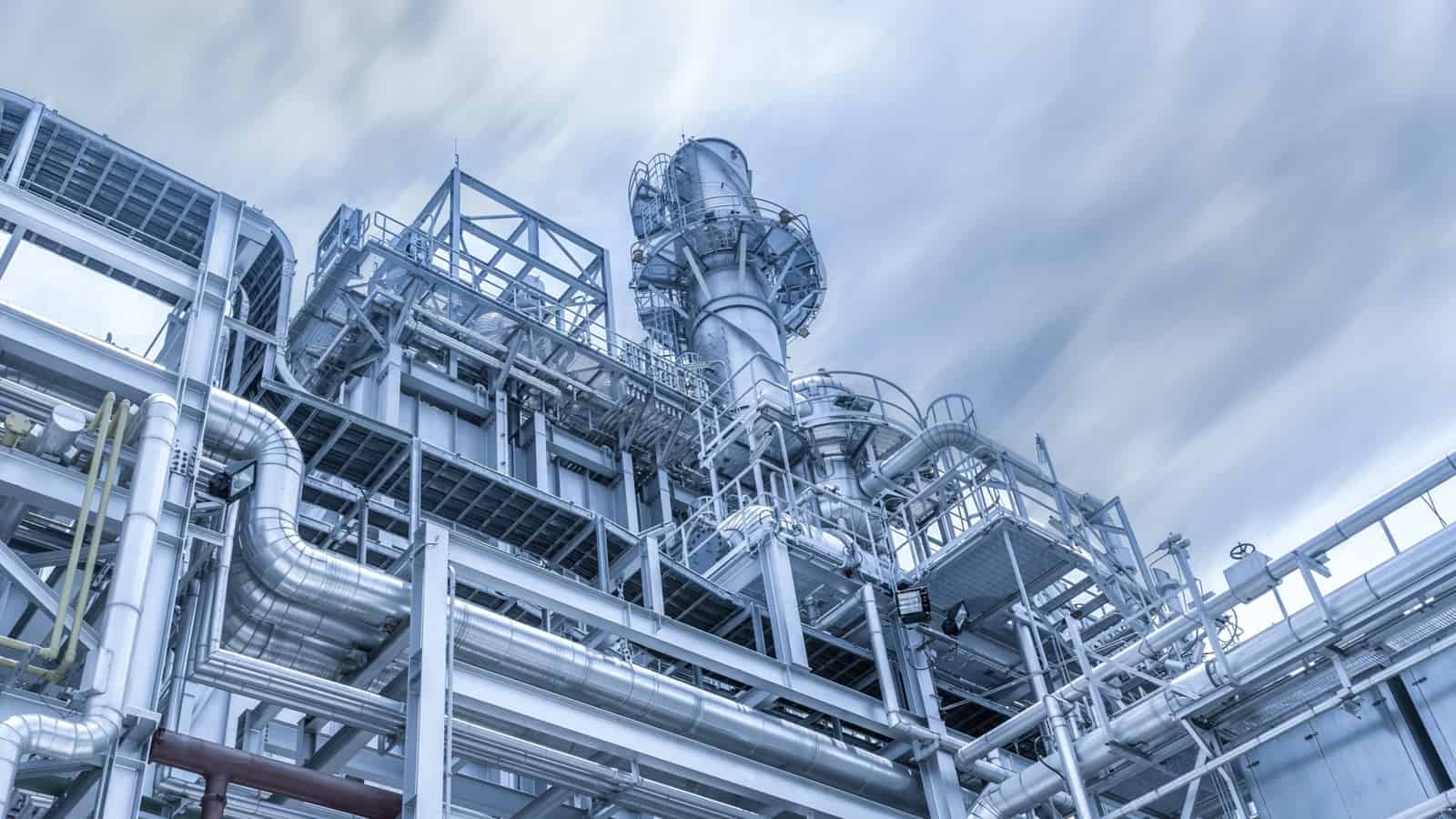
The Environmental Protection Agency is considering a rule that would change the way power plants operate in America—but without significant adjustments, it could have devastating consequences.
The background: Right now, about 60% of America’s power generation comes from a combination of coal and natural gas.
- The EPA’s proposed rule would require coal and natural gas–fired power plants to deploy either carbon capture technology or hydrogen power within 10 years to lower emissions.
- If unable to deploy these technologies at the scale required in that timeframe, these power plants would be forced to shut down.
The problem: While carbon capture and hydrogen power technologies are vital to decarbonization, the required scale and timeline make implementing this rule difficult.
- “Carbon capture and hydrogen are tremendously promising—and manufacturers are leading the way in developing these technologies. But neither have been deployed at the scale needed to support 60% of our entire power generation within a short timeframe,” said NAM Vice President of Domestic Policy Brandon Farris.
The timeline: The EPA’s proposed 10-year timeline leaves little room for flexibility when it comes to implementing the order. According to Farris, environmental impact studies alone could take more than four years.
- “We’re talking about 10 years to essentially retrofit more than half of our power generation,” said Farris. “You would need this permitted, installed and operational within those 10 years, which would be difficult even if the technology was available today at scale.”
The impact: The rule would require plants that do not meet the new standard in 10 years to shut down entirely. As a result, many plants would have to shift resources immediately to plan for a likely shutdown.
- “The big hammer is these plants having to shut down in 10 years if these technologies are not installed,” said Farris.
- “So you’ll see a lot of money spent and not a lot of progress made because this technology isn’t ready at scale, and we have only a few years to permit, install and operate.”
The next steps: The NAM has submitted comments on the rule, and the EPA is working on a final version now.
- “We’ve emphasized that the timeline is not workable,” said Farris. “You would need to have a longer off-ramp and a way to ensure that the technologies required are proven at scale.”
